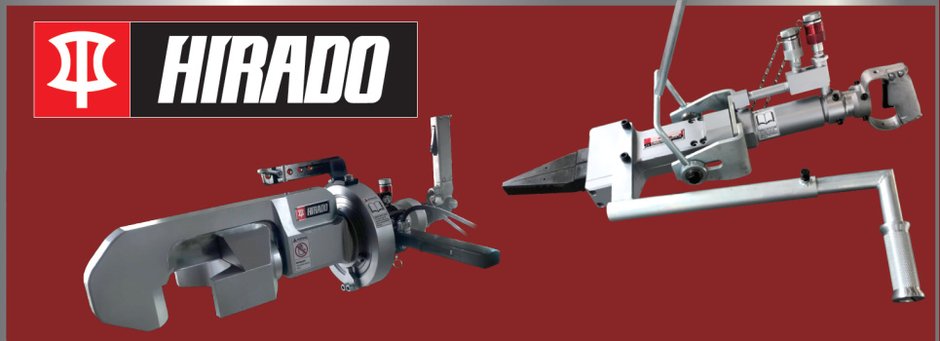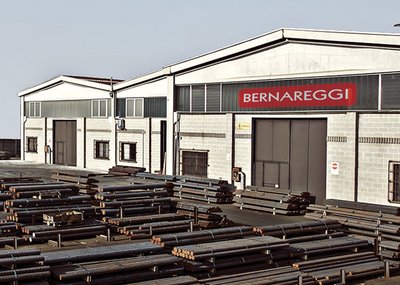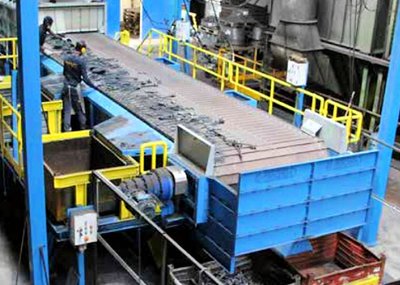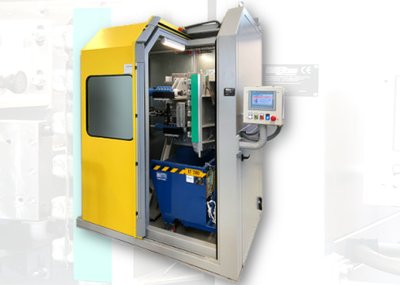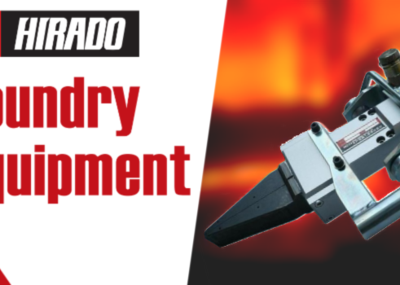Test cases in Europa prove that CASTING SPLITTER and SNAP BREAKER reduce fatigue, costs and labor time while increasing safety.
As foundries start on their road to recovery from the COVID pandemic, an increased emphasis is placed on cost cutting methods, effective use of production and increasing the market competitiveness of the foundry in a everchanging industry.
Much has been written about analyzing processes and the implementation of new innovative (digital) technologies in several parts of the production process. An area which is often overlooked is the fettling end process where large cost savings and improvements can be made.
Hirado, a Japanese manufacturer of innovative hydraulic foundry equipment, for the first time showcases a summary of 2 separate test cases of its equipment which revealed large improvements and drastic cut savings of up to 80%.
Full reports are available through Hirado’s international network of partners worldwide.
Test Case 1: 80% cost reduction by effectively breaking runners in Germany
The foundry involved in this test case is in Northern Germany.
- Molding lines are manual and semi-automatic producing up to 40 molds per hour.
- A wide variety of grey and nodular castings are produced up to 3000kg with grades up to GJS 700
- The runners of each casting range from 30mm up to 60mm in circular and square shapes. As most runners are 1 to 2 meters long, the cutting of the runners into smaller pieces is required to avoid bridging in the furnace which may lead to an inefficient furnace, a long smelting time and high energy costs.
The foundry currently cuts the runners by using grinders. This solves the bridging problem, but increases labor costs, turnaround time and creates high consumable (grinder disc) costs. During a visit to the foundry, a storage unit containing a few months of worn consumables. The actual picture of this scene can be found above (Used with permission of the foundry)
Hirado’s Solution
Hirado has an innovative solution to all these problems, the SNAP BREAKER series. The Snap Breaker is a machine which, when positioned over the runner, uses hydraulic pressure to operate its moving jaw and break the runner in half within mere seconds.
The result is a safer, faster, and easier operation. As the Snap Breaker requires no consumables, the yearly consumable costs can be reduced dramatically. The time for breaking of a single runner is also reduced thereby decreasing labor time and costs.
The Demonstration
Based the known background information, size of the runners (max. 60mm. tensile strength grade is max. 700, but 450 covers 80%) and demonstration experience, the Snap Breaker SBH-2L (397kn Power) was deemed to be the best option. For the demonstration onsite in Germany the SBH-2 (222kN) power was used for a reliable assessment if the SBH-2 was sufficient or the SBH-2L was indeed needed.
Test performed onsite revealed that the Snap Breaker SBH-2 was able to break GJS 450 iron runners of 50mm at 80% power (177kN) within 2 seconds. The 55mm runners could not be broken however due the gap limit of the SBH-2 and limited power. Based on the demonstration results however, it could be concluded that the SBH-2L would be sufficient for all due its higher power (397kN)
The Analysis & Conclusion
The data of the current Grinding method (Salary, Consumable Cost, Employees involved, Time) was provided by the foundry and put against the results of the demonstration.
Using Hirado’s unique analysis sheet, it was revealed that time could be cut in half with the Snap Breaker, thereby reducing operators required. It was also revealed that consumable costs of up to 39,000 Euro could be reduced by over 95% as the Snap Breaker required virtually no consumables.
By implementing the Snap Breaker the foundry would increase worker safety, decrease fatigue and lower labor time. The financial analysis also reveals that current annual costs of more than 70,000 Euro could be reduced by more than 80%. The vast amount of advantages and savings thereby meant that the investment in the Snap Breaker was very much worthwhile.
Test Case 2: Increased worker morale and production, less downtime and heavy cost reduction in Italy
- The foundry involved in this test case is located in Northern Italy
- Molding lines are brand new, automatic and can produce up to 300+ molds per hour.
- Castings for mainly the automotive and construction industry average 40kg with grades up to GJS 700, but mainly GJS 450
In the fettling process it currently has 2 employees working on a non-vibrating conveyor belt utilizing hydraulic wedges to degate the castings from the runner system. The hydraulic wedge currently utilized weighs 30kg and has 126kn of splitting power. While the molding line and rest of the production are high speed, the employees at the degating section cannot keep up with degating speed required. As a result, the castings are not degated continuously and some are degated at a later point. The result is a bottleneck and production is ceased a few days a week. To combat this problem, the foundry is considering additional hydraulic wedges and employees.
Hirado’s Solution
Hirado has been manufacturing it’s innovative, lightweight and high-speed hydraulic wedges, The EP Casting Splitter, since 1980 and are currently used in over 20 countries worldwide. Hirado’s unique hydraulic technology allows for light-weight equipment, yet powerful and fast. In addition, the patented dual switching technology ensures that only the power required is supplied, thereby reducing wear and downtime while extending the lifetime of the equipment. Operation is dual handed using a variety of handles, thereby increasing safety, reducing fatigue, and allowing for faster degating.
The Demonstration
Based the known background information, size of the gates (max. 30 x 30mm) and demonstration experience, it was decided to test Hirado’s Casting Splitter EP-80N(23). The opening width, length of wedges and power can also be easily adjusted by the interchanging of liners, wedge and counterwedges (E.g. an EP-80N(23) can be turned into an EP-80N(30)L ).
The test of the EP-80 was performed by actual employees on actual castings. On the other side of the conveyor belt, another employee was using the current hydraulic wedge to compare it to the EP-80.
During the test, the difference between the currently used hydraulic wedge and the EP-80(23) immediately became clear. The difference in weight (13kg) meant that the worker with the EP-80(23) was able to get much faster to the casting, thereby saving time. Due to the fact that the EP-80(23) can be used both horizontally and vertically and that the counterwedges of the EP-80(23) can be turned 360 degrees, the worker was able to degate the casting without picking up the casting. In comparison, the worker with the current hydraulic wedge had to pick up each casting, thereby losing time.
In addition to the speed, it was also observed that the EP-80(23) could degate every casting at 70% power in one shot. The current hydraulic wedge failed to degate most castings in one shot and required several more for 1 piece. Unlike Hirado’s pump, the hydraulic pump currently used cannot build up pressure and always runs at 100% power.
The Analysis & Conclusion
Due to the above mentioned advantages in comparison to the currently used hydraulic wedges, it was shown that the EP-80N(23) could degate more than twice the amount of gates in the same time frame (19 gates vs 8 gates) at less power (70% vs 100%) , less energy (3,7 kW vs 5,5 kW) and less physical fatigue due to the difference in weight (17kg vs 30kg)
Data from the tests of both equipment alongside data provided by the foundry (employee salary, molding line capabilities) was used in Hirado’s unique analysis sheet to calculate the annual costs and units required to solve the bottleneck issue.
The analysis revealed that to solve the bottleneck issue, an additional 3 foundry wedges (and 3 operators) of their current manufacturer would be required. This would lead to 5 foundry wedges and 5 operators in total and annual cost of approximately 180,000 euro and 900,000 euro on a 5-year base.
In comparison, by switching to Hirado’s EP-80 system, only 2 systems and 2 operators would be required. In the 1st year, the cost reduction would be 30% whereas on a 5-year base the cost reduction could lead to more than 60%. By implementing the Hirado EP-80 system, the foundry could save costs, increase their current production by 40% and ensure a fast delivery time.
The Next Step
The summary of the test cases above are just a fraction of how Hirado’s Foundry Equipment can contribute to a more efficient production, increased profitability, and a more competitive foundry. Hirado’s network of international partners provide demonstrations and test cases such as above free on site.
To find out more about Hirado, their innovative equipment and its network of partners, please visit the official website at www.hirado.co.jp/en

